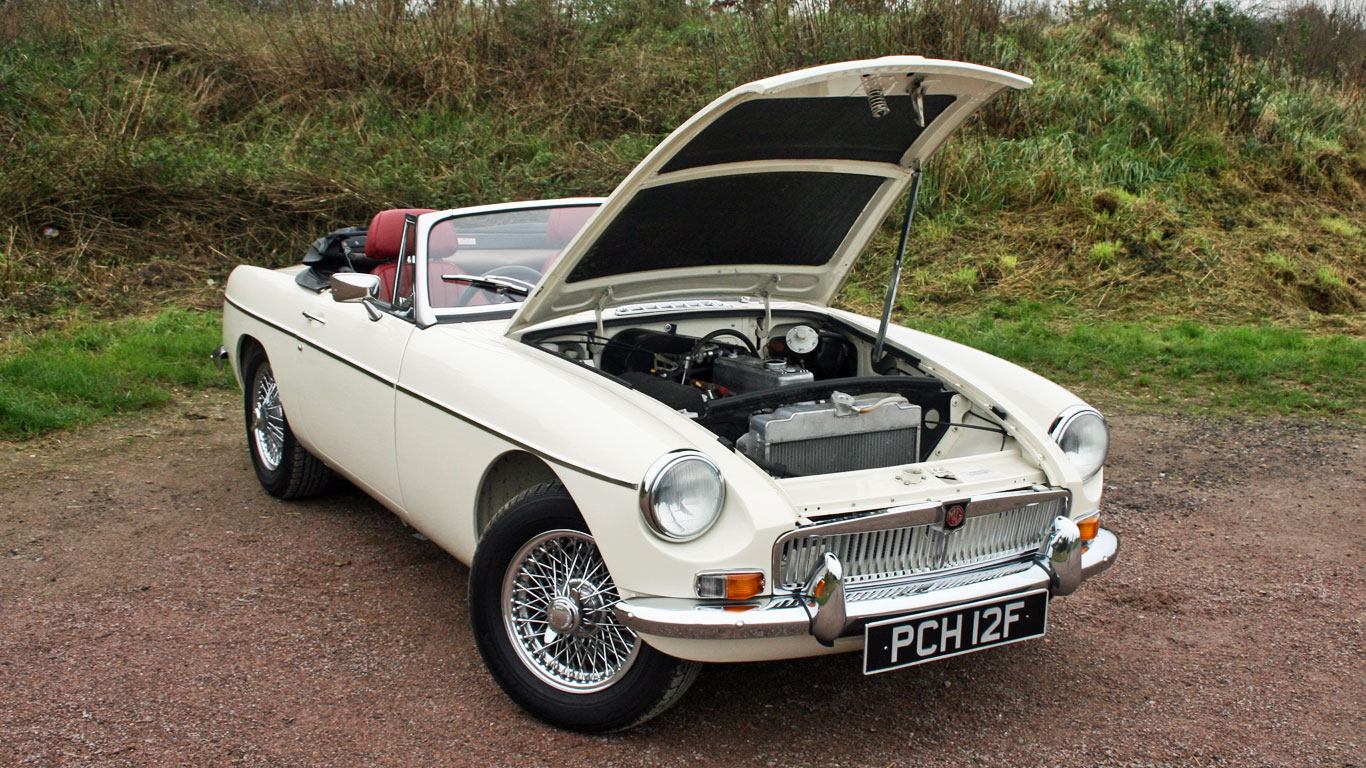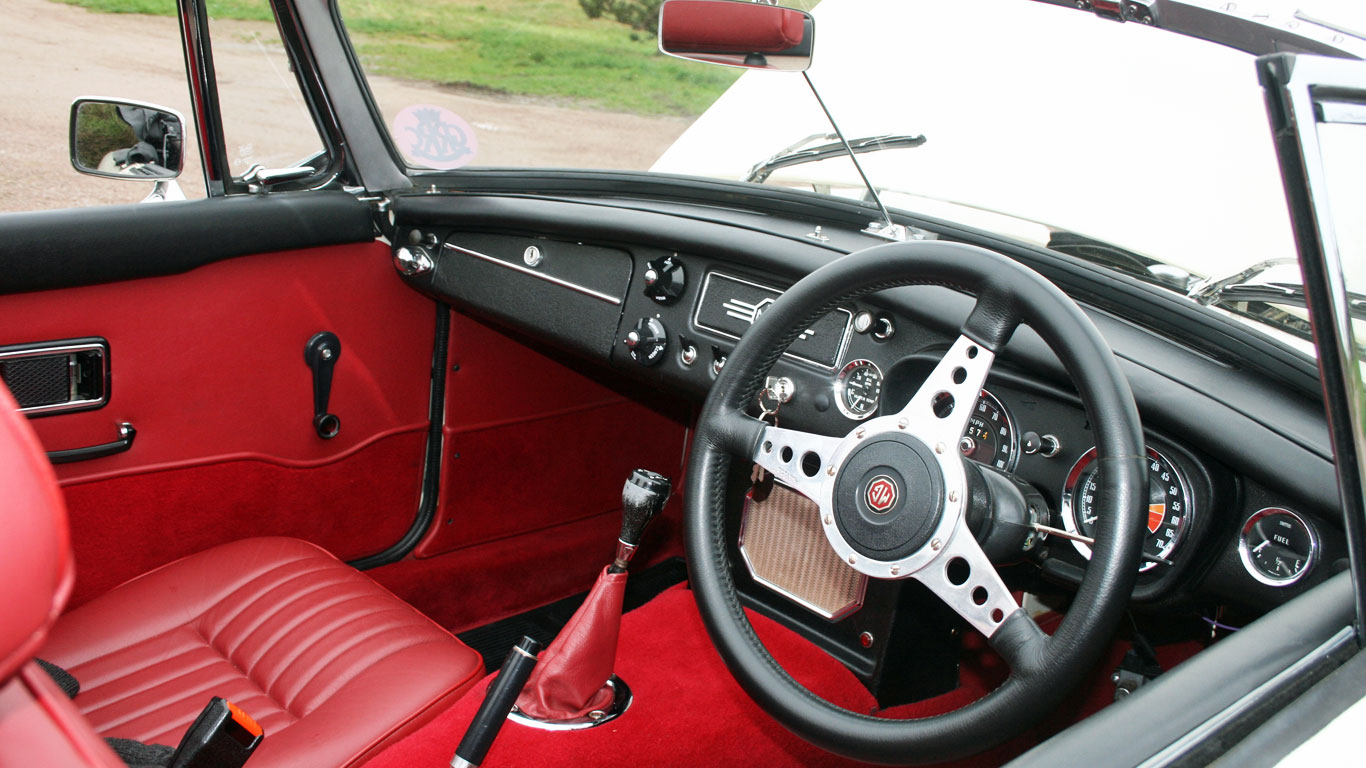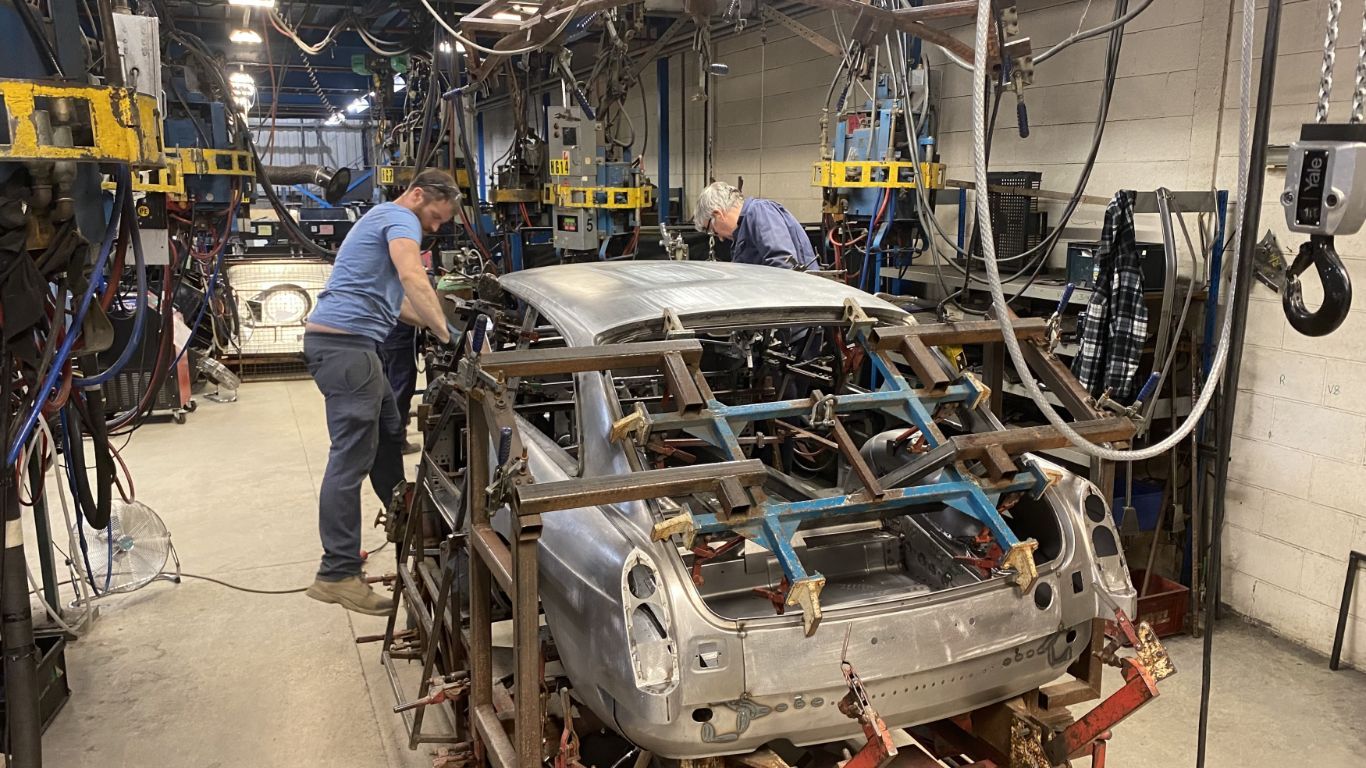The MGB – arguably Britain’s most popular classic car ‒ celebrates its 60th birthday in 2022. However, it’s also a victim of its own success. Owners love them, but some enthusiasts turn up their noses when they see yet another MGB turning up at a car show.
This particular ‘B’ is owned by British Motor Heritage (BMH). The firm was originally established in 1975 as a subsidiary of British Leyland, to support owners of classic cars with new parts created using the original tooling.
BMH was acquired by BMW as part of its £800 million Rover Group takeover in 1994, before being sold by the Germans in 2001. Since then it has operated as a private company.
We put the MGB through our famous Retro Road Test to discover whether it’s deserving of the love it gets, or whether it’s overrated.
What are its rivals?

In its time, the MGB would have been a rival for small sports cars such as the Fiat X1/9 and Triumph Spitfire. The MG is a more appealing proposition in our eyes, but these rivals will certainly be a rarer sight on the roads.
Buyers today might also consider newer classics, such as the original Mazda MX-5. This channels the spirit of a retro British roadster, but with modern reliability.
What engine does it use?

Apart from the special V8 version, all MGBs used the same 1.8-litre B-Series engine. It produced 95hp at most (power was reduced in some versions) – not a lot by today’s standards.
Although it was considered a heavy car at the time, 95 horses are plenty for a car weighing less than 1,000kg. This British Motor Heritage example isn’t entirely standard either, using fuel injection rather than the original carburettors.
What’s it like to drive?

This subject divided opinion in the Motoring Research office. If you’re used to modern cars, the answer is ‘not very well’. The brakes are, naturally, hard work – requiring a big shove of the middle pedal to lose speed. You soon get into the habit of using the gears to slow down.
For a car that can trace its roots back to 1962, however, it handles very tidily. The rack-and-pinion steering provides the kind of feedback drivers of modern machines can only dream of. It’s a proper sports car driving experience – you sit low down, and its four-cylinder engine creates a pleasing rasp.
What’s really surprising is how muscular the B-series motor feels. Most of the time, you can leave it in fourth gear, flicking the overdrive on and off using the switch on the gearknob. If you do need to shift, the gear change is a touch on the notchy side, but a short throw means it’s not much of a chore.
Reliability and running costs

Being such a popular classic car, there’s a huge amount of support for the MGB in both the club scene and specialist companies.
While there’s no reason why an MGB should be unreliable if it’s looked after and serviced regularly, parts are readily available. Also, you’re unlikely to encounter an issue that isn’t covered in depth on internet forums.
Although the 1.8-litre engine isn’t the most powerful, it will be thirsty by modern standards. Don’t expect to see more than 30mpg on a regular basis.
Could I drive it every day?

Despite this, you’d have to be very committed to drive an MGB every day. Even this very tidy example could soon become a chore. Our Tim Pitt tried it on an M25 commute one November evening and complained about how noisy it was on the motorway – not to mention the lack of a radio and heavy steering.
On the plus side, it’d be easy to make an MGB easier to live with – whether by fitting power steering, an audio system or comfier seats. The long-striding overdrive gear makes things quieter at higher speeds, too.
How much should I pay?

MGB values vary dramatically. The GT coupe is less desirable than the open-top roadster, and people are happy to pay more for the earlier examples with chrome bumpers.
You can pick up a ropey rubber-bumpered GT for a couple of grand, but you probably shouldn’t. A £8,000 budget will buy a tidy roadster, or you can double that (and more) in the hunt for a restored example.
What should I look out for?

Rust, rust rust. A few minor bubbles on the wings or sills might be hiding more serious rot – and that will be expensive to fix.
British Motor Heritage can provide panels – they’re brand new, and made using the original tooling, so should fit perfectly – but they’re not cheap. To give you an idea, a steel bonnet will cost £582 (and that’s not including painting or fitting). An aluminium one is £999.
Other than that, it’s pretty much the regular classic car precautions. Has it been looked after? Serviced regularly? Are there any modifications – if so, have they done to a good standard, and are they the sort of modifications you’d want? Track-focused upgrades won’t be ideal if you’re looking for a car to pootle around in at weekends.
Should I buy one?

It depends what you want in a car. If you get your thrills from driving flat-out on country roads, or are looking for a track-day machine, there are better, newer options out there.
Likewise, if you want a rare classic that will get lots of attention, there are lots of slightly leftfield options available.
But if you want a British sports car that’s brilliant at cruising around on a sunny day, with a huge support network for parts and servicing, the MGB is ideal.
Pub fact

In 1967 MG launched a 3.0-litre straight-six version of the MGB, known as the MGC. It was intended to replace the Austin-Healey, but soon developed a poor reputation.
The heavy engine and new suspension meant it didn’t handle as well as the ‘B’, and it was criticised by motoring journalists at the time. The MGC was axed after just two years.
ALSO READ:
1983 Austin Metro review: Retro Road Test



[…] ‘Ferrari’ in the film was actually a fibreglass replica based on an MGB. And the Revival is also a replica of sorts, made in Twyford rather than Maranello. However, it’s […]
[…] 1967 MGB Roadster (photo source) […]
[…] Credit: RetroMotor […]
[…] fittingly, Frontline is based in Abingdon, close to the former MG factory, which closed its doors in 1980. The last car out of the door was an MGB, but the LE60 is a very […]